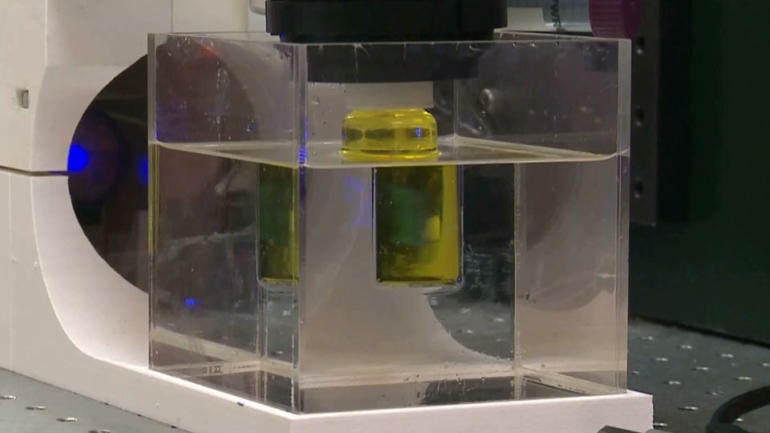3D printing has been touted as a gamechanger for many industries. But some say it’s failed to deliver on its potential because it’s just too slow.
CGTN’s Mark Niu takes a look at a new 3D printing technology that could help speed up the creation process in a novel way.
Traditional 3D printing happens layer by layer. But some researchers thought there must be a better way.
“If you go to get a CT scan, a 3D object is imaged by projecting X-rays from many different angles through the body and then reconstructing what is inside the body,” Hayden Taylor, mechanical engineering professor at the University of California-Berkeley said. “So we thought, let’s just reverse that idea to create objects instead of imaging them.”
Researchers from the University of Berkeley California and Lawrence Livermore National Laboratory have invented a new method of 3D printing called computed axial lithography.
By using a video projector to shine rays on a light-sensitive material that slowly rotates, the material absorbs energy and turns into a solid.
The technology has been used to print more than 30 different objects ranging from about .2 millimeters in size up to 10 centimeters in diameter. Theoretically, it could be used to print much larger objects.
It’s already used to print objects in a revolutionary way.
“Because we are printing the entire volume of the object at once, we can print an object around another pre-existing object,” said Taylor. “We showed a screwdriver handle that we had printed around a pre-existing steel shaft. You can think of that principle to be used to enable greater mass customization of consumer products – for example customized grips on sporting equipment, better tools, safer tools, and potentially prosthetic devices.”
Turning science fiction into reality takes a lot of math, according to the researcher who devised the computations that drive the printing process.
“It’s summing up the dose, the energy that you deliver from each of the angles together in order to produce the 3D object,” researcher Indrasen Bhattacharya said. “So in our computation, we model that. We model how exactly the videos are summing up over multiple angles to produce the 3D Energy distribution.”
Printing an object all at once means it can do things other 3D printers can’t — like printing a ball inside of a cage.
While it’s still early days, researchers believe their technology holds great promise for the industry.
It can print on a wider range of substances, meaning it may someday produce sturdier mechanical parts while also creating delicate, flexible materials that simulate biological tissue.
 CGTN America
CGTN America

